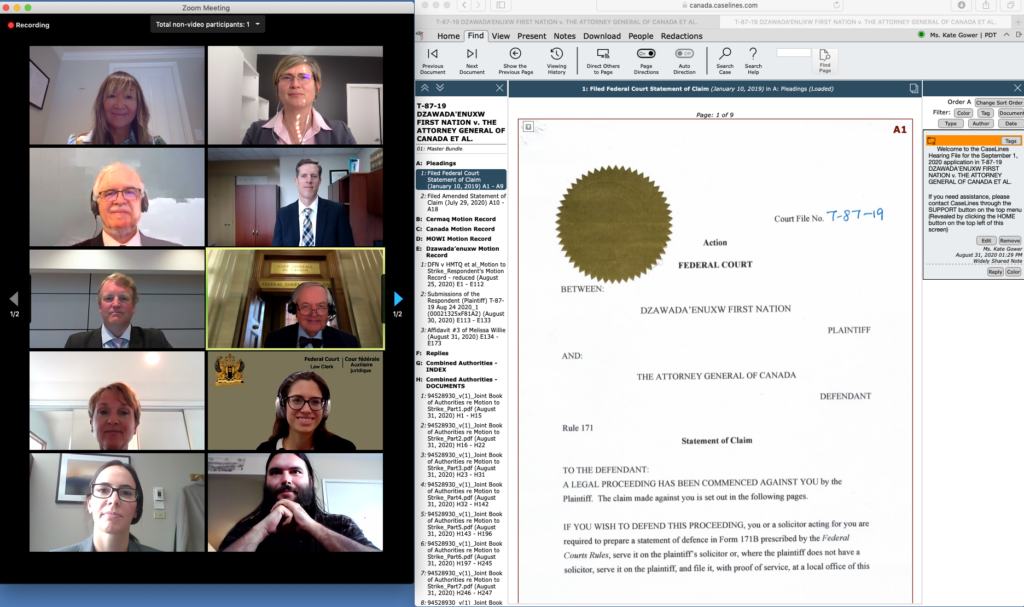The cloud-based document management program, CaseLines, was introduced at the Federal Court of Canada this week, used by the parties and the Court in a motion to strike before Prothonotary Aalto.
Cermaq Canada Ltd. brought the motion, seeking to strike two declarations sought by the Dzawada’enuxw First Nation (DFN) in its Statement of Claim filed. In its claim, filed in January 2019, DFN seeks declarations that the Dzawada’enuxw have Aboriginal rights regarding harvesting, managing and exchanging euchalon and salmon, and that Canada infringed on those Aborignial rights when the government issued a number of fishing licences to Cermaq Canada Ltd and Mowi Canada West Inc.

The submissions of the four parties and the joint book of authorities filled 3489 pages.
Jack Woodward, Q.C., representing the Plaintiff First Nation, gave other counsel access to a Hearing File created in CaseLines a week before the hearing. As the motion documents were filed with the Federal Court, we (the Plaintiffs) loaded documents into the CaseLines Hearing File. Note that, as in the Ontario Courts, CaseLines is only being used as a cloud-based document sharing e-hearing platform during the hearings – all the standard filing procedures for the Federal Court continue to apply. Prothonotary Aalto took his training on CaseLines the day before the hearing.
At the hearing, schedules were set for the parties to reconvene before the court several weeks later, rather than having Prothonotary Aalto make a decision. The documents will remain in CaseLines, ready for all parties and the Court to review at any time and to be used when counsel next appears before the Court.
Why this matters: With the Covid-19 pandemic unfolding, the justice system has pivoted into virtual hearings, but the question of how to manage the processes and the documents in the digital environment is not getting a lot of attention. Programs like CaseLines significantly improve these processes.
The Ontario Courts began using CaseLines in August, and are already updating their roll-out based on feedback from users. Mr. Woodward Q.C. is becoming a leading figure in bringing the innovation to Canadian Courts, having used CaseLines to argue his portion of a hearing before the B.C. Supreme Court last fall (with counsel for the government of B.C. declining to use the program), and now bringing the technology before the Federal Court of Canada.
Access to Justice BC says that to make change happen in the justice system, we need a culture shift towards being user-centred, collaborative, experimental and evidence-based. I would like to see other jurisdictions launching pilot projects to experiment with digital document management programs such as CaseLines so that we can all gain some much-needed hands on experience with, and evidence about, these kinds of user-friendly process innovations. I would recommend starting with hearings that rely on a paper record, such as chambers applications and motions like this one.

